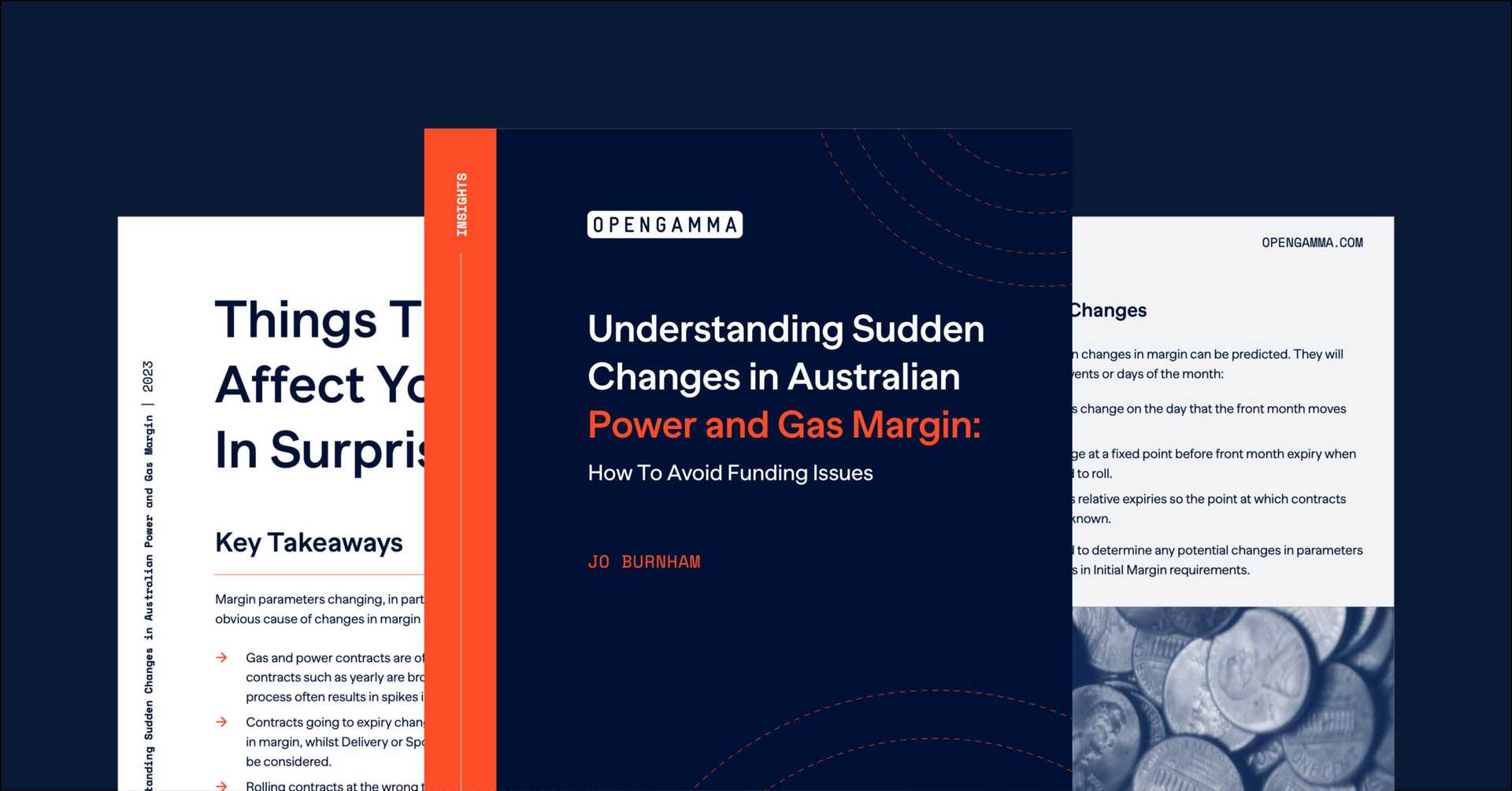The recent turbulence in the gas markets isn’t showing any signs of going away. The recent events in Ukraine and related potential disruption to gas supplies is only going to add to the likelihood of this volatility continuing.
The higher prices and sudden spikes have led to increased concern over margin levels. We have seen an increase in queries from clients about the causes of changes in requirements and what they can do to mitigate them.
The reasons for, and impact of, any increases in outright rates are easy to understand. If prices are higher and more volatile, then you would expect these to rise.
But the biggest changes in requirements have generally occurred because of the changes in the spreads charged between different expiries. This has revealed some interesting features of the way parameters are set and the impact this can have on margin requirements.
SPAN Terminology
To understand what is going on it is necessary to be aware of the different components of the SPAN margin calculation – none of this will make sense unless you understand the terminology:
- Scanning Risk – Theoretical worst case loss for a given commodity under the SPAN scenarios assuming that prices for all expiries move at the relative levels implied by the scanning range applicable for each.
- Intra Commodity Charge – additional margin to cover possible spreads between the price moves of different expiries compared to the scanning ranges.
- Inter Commodity Offset – a credit given for offsetting positions in different commodities where a correlation exists between the prices.
Sudden Changes
We have described previously how margin can be unpredictable in our eBook Gas and Power Derivatives | Dealing With Margin Rate Changes. This describes how as contracts roll, new sets of parameters are applied which may lead to large jumps in requirements.
What we have seen in the current market conditions is that these changes have become even more apparent, particularly where they are leading to increases to already high margin levels. Firms are having to look for ways to reduce their margin, including closing out positions, and this requires a more in depth understanding of the potential impact of any changes, which can sometimes be surprising.
Intras
In SPAN, each expiry is assigned a discount factor. This is the percentage of the Scanning Range that will be charged for that particular expiry. Generally this is 1 for the front month and then gets lower for later expiries where prices are less volatile.
This discount factor is then taken as a “delta” for the position to be used in Intra Commodity Spread calculations – so depending on the level of Scanning Risk set for an expiry, any spread charges applied to that expiry will also be impacted. Generally expiries close to each other will have similar discount factors and therefore the same long and short position will offset each other with only a small margin applying. However this is not always the case, with sudden jumps in margin rates meaning that where you believe you have a spread position actually only a fraction of the position will count and a much higher margin than expected will apply.
CCPs often prioritise the spreads based on the amount of margin that would be charged on a spread position – the total including the Scanning Risk and the Intra Commodity Charge. This in general ensures that the optimum margin is calculated, but because of the differences in discount factors and the way that remaining delta is assigned to other spreads then this may not be optimal. More beneficial credits for a specific portfolio may be missed.
Inters
As described above, the order in which offsets are applied should be optimal. But because of differing discount factors and spread priorities, the delta available for Inter Commodity Offsets – which apply a credit to the margin for correlated products – might not be what was expected or provide the maximum credit. This is important because the benefit can be significant – the credit applied can be over 90% of the Scanning Risk.
Also, some expiries may be excluded from the calculation. In particular, front months may be excluded. This will be because CCPs believe their additional volatility and the breakdown of normal behaviour during the delivery period for a commodity means that the correlations cannot be relied on to hold true.
These spreads are also “tiered”, meaning that expiries are grouped together and offsets applied for a group of neighbouring expiries. The savings applied will vary depending on the tier, so will naturally be higher for similar expiries, compared with for example front months of one commodity versus back months of another. Due to the complexity of SPAN, differences in the way in which the Intra Commodity Charges are calculated for one contract can significantly impact the position available on which Inter Commodity Offsets can be calculated with another contract.
Conclusion
Predicting the impact that any one parameter change is going to have on the requirements for a portfolio is very difficult. CCPs try to ensure that the margin is optimal and correctly represents the risk, particularly with the use of prioritisation.
However they don’t always get it right, which isn’t really surprising given the number of parameters required to drive the SPAN calculation. There are many thousands of Intra and Inter Commodity parameters defined just for the gas markets. Unfortunately, these quirks of the margin algorithm can lead to significant jumps in requirements, which are not ideal in the current environment. They also make it very difficult to decide on the optimum change to make to a portfolio to reduce margin.
The move from SPAN to VaR will remove some of this unpredictability, with the need for parameterised Intra and Inter Commodity calculations replaced by the inherent correlations within the historical VaR scenarios. However, the sudden jumps in margin caused by contracts moving closer to expiry are likely to remain.




